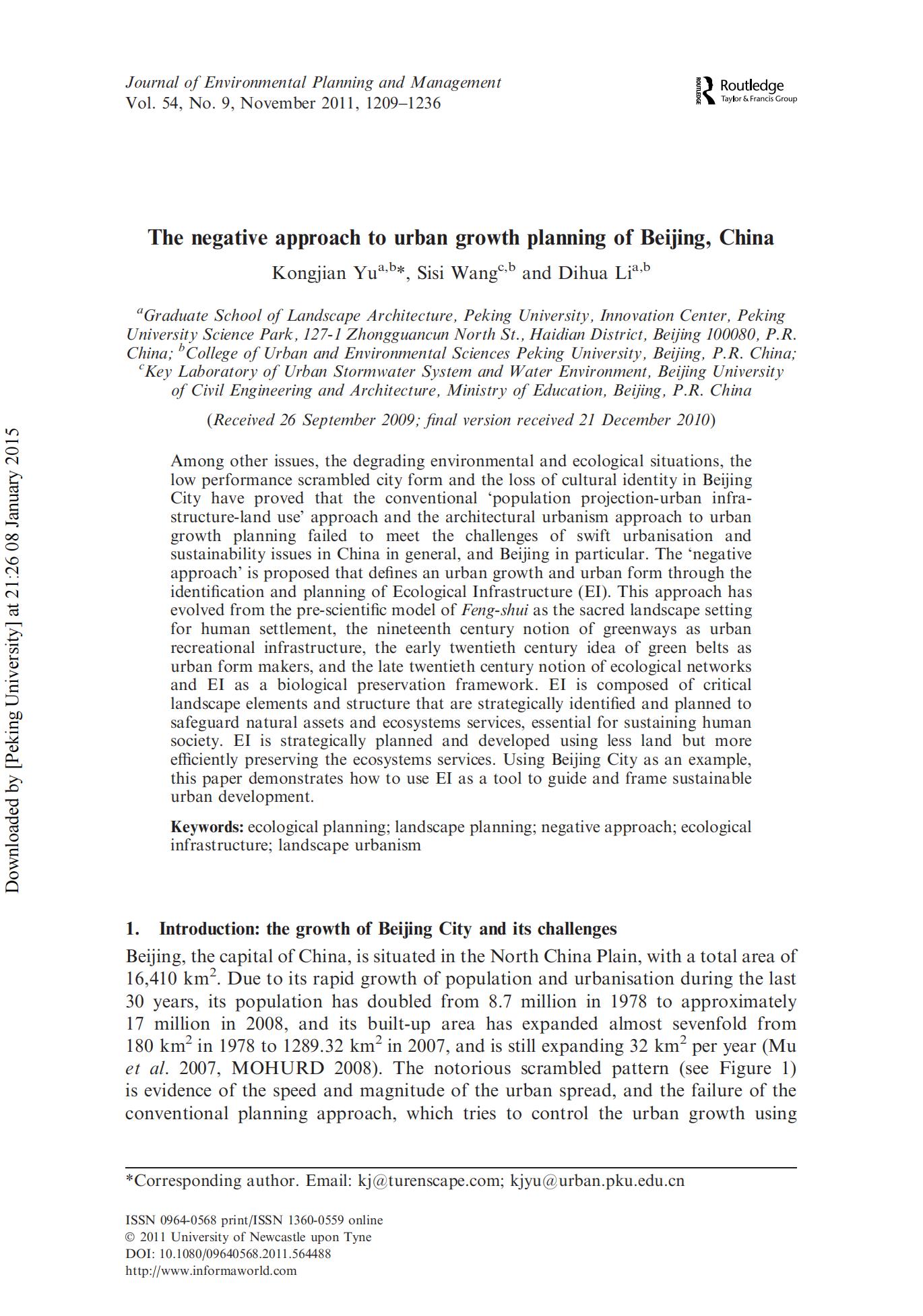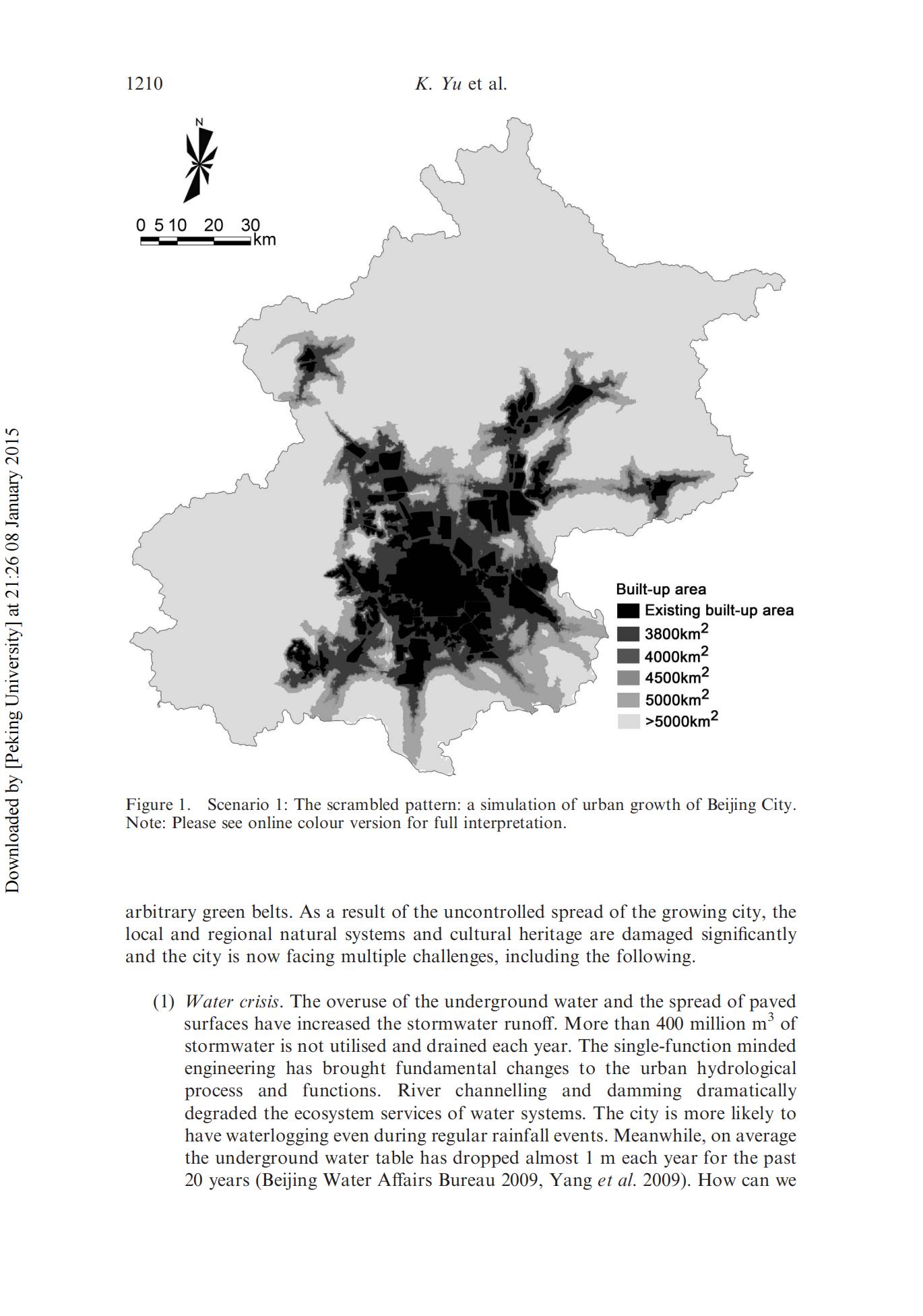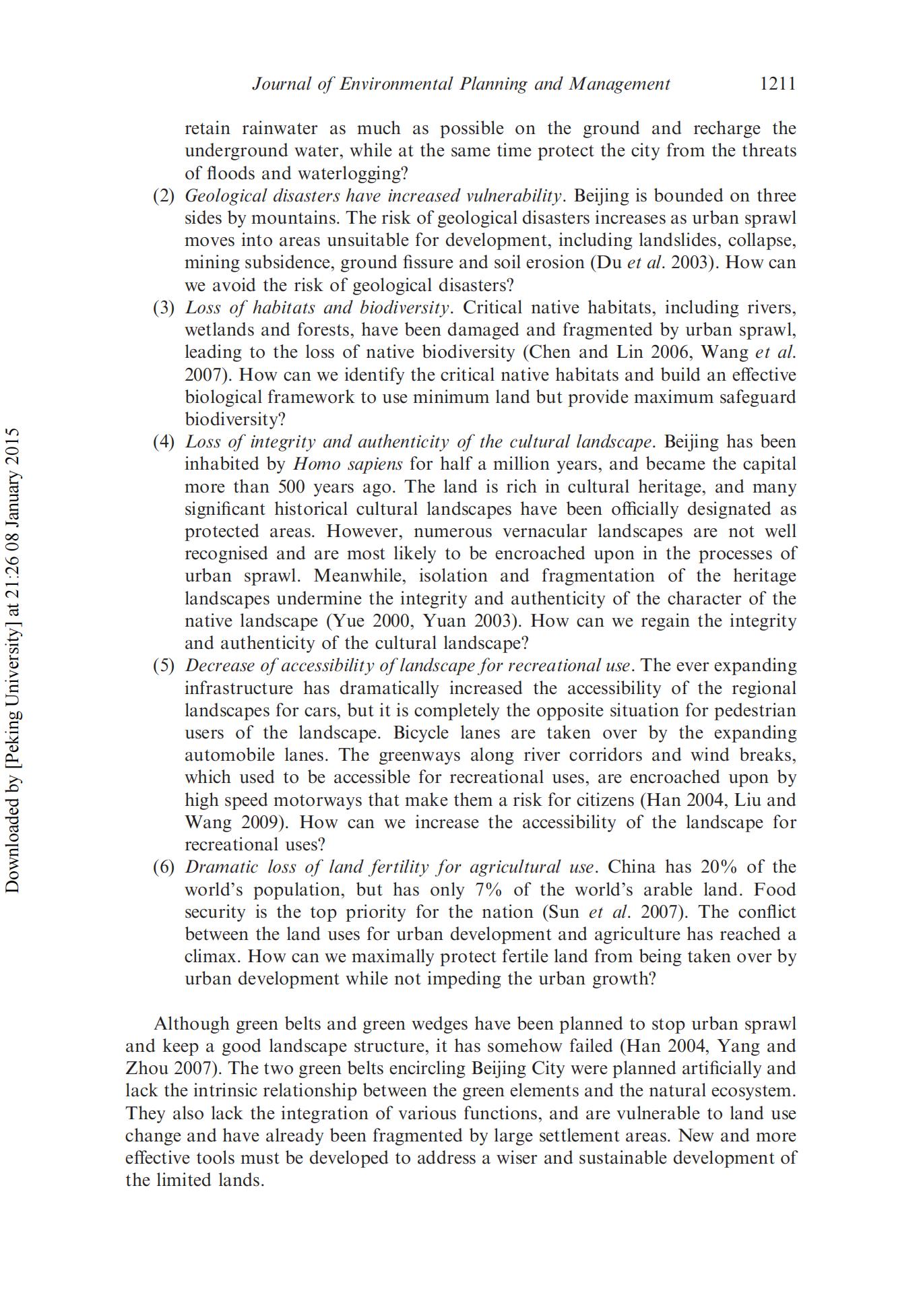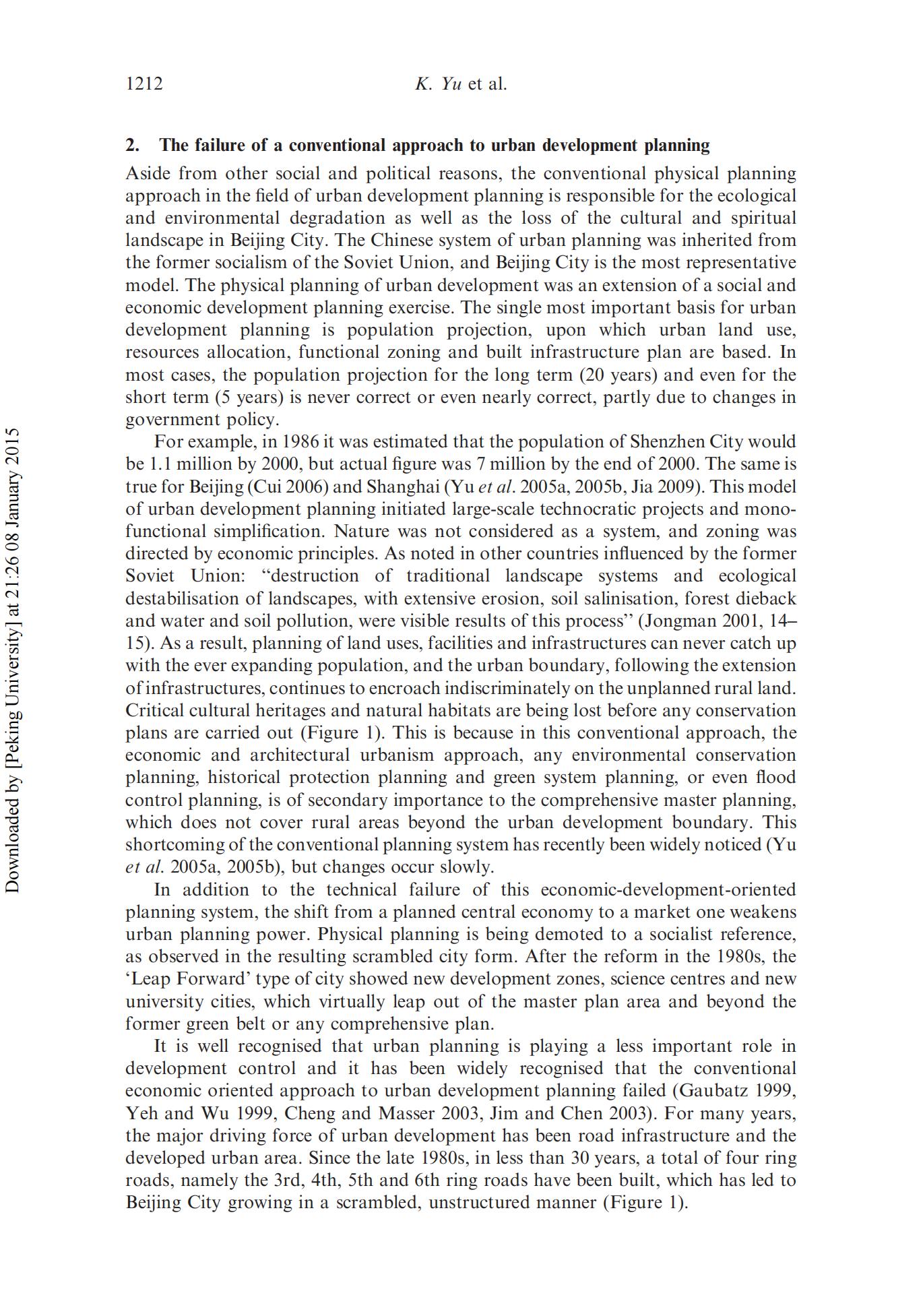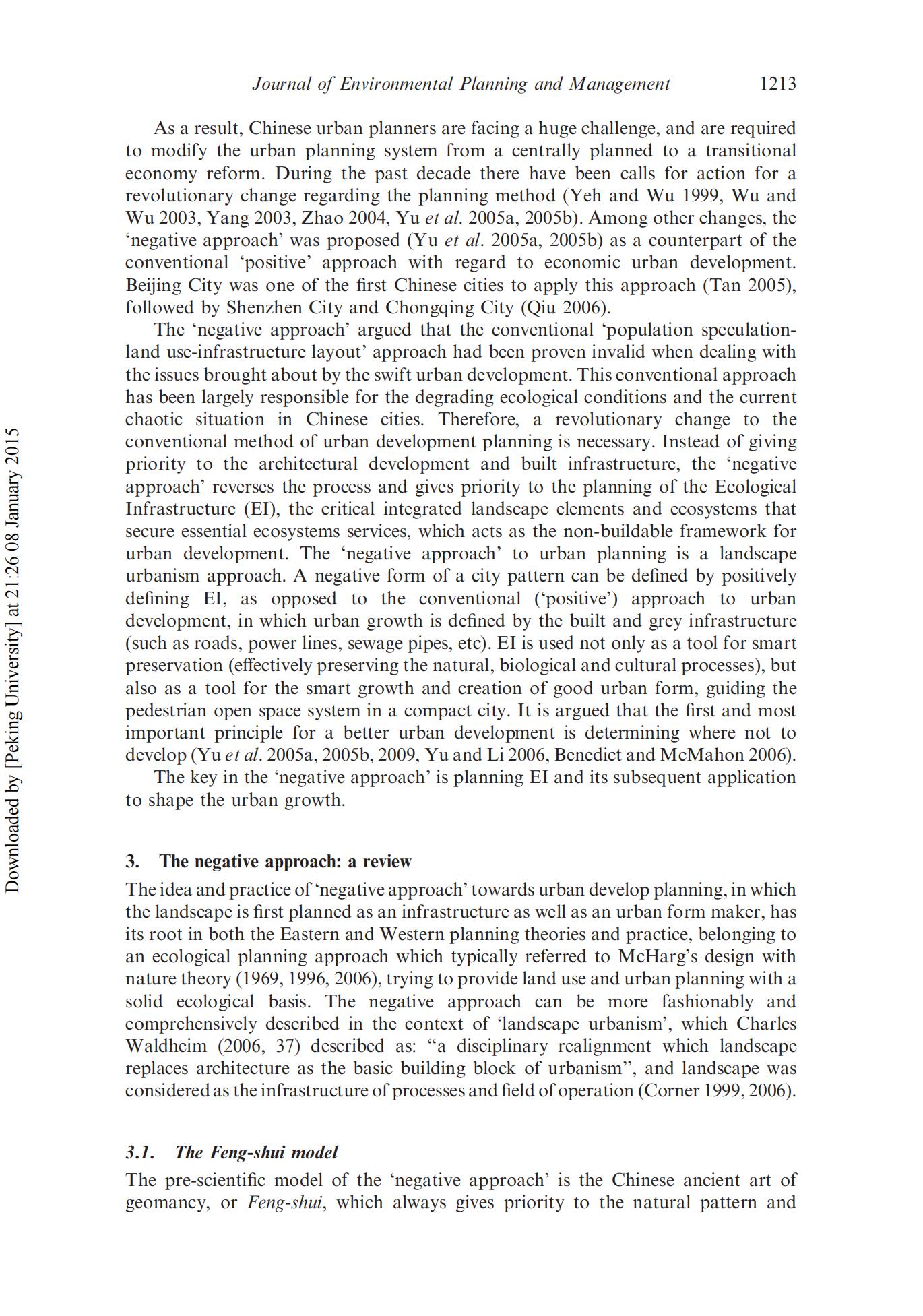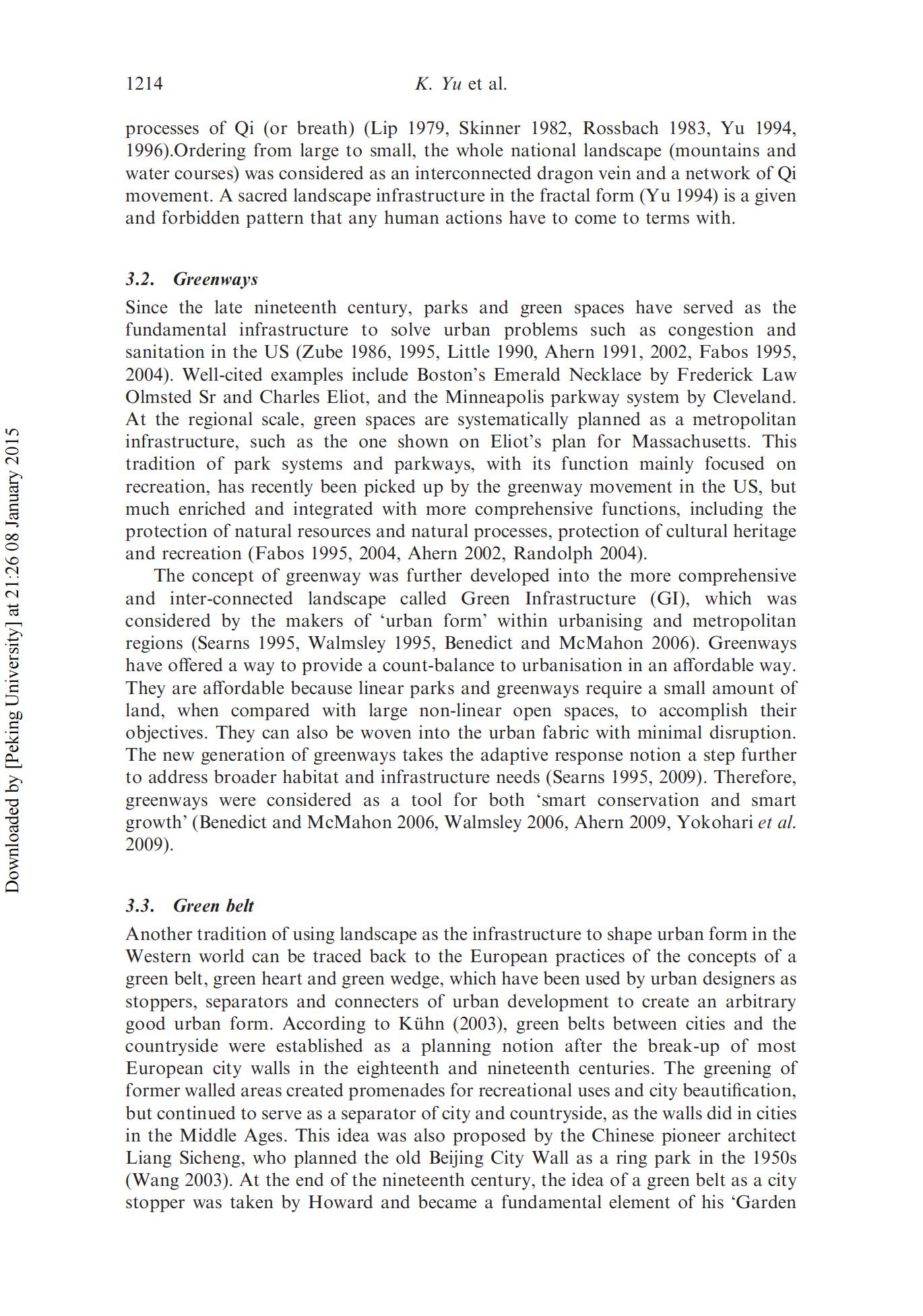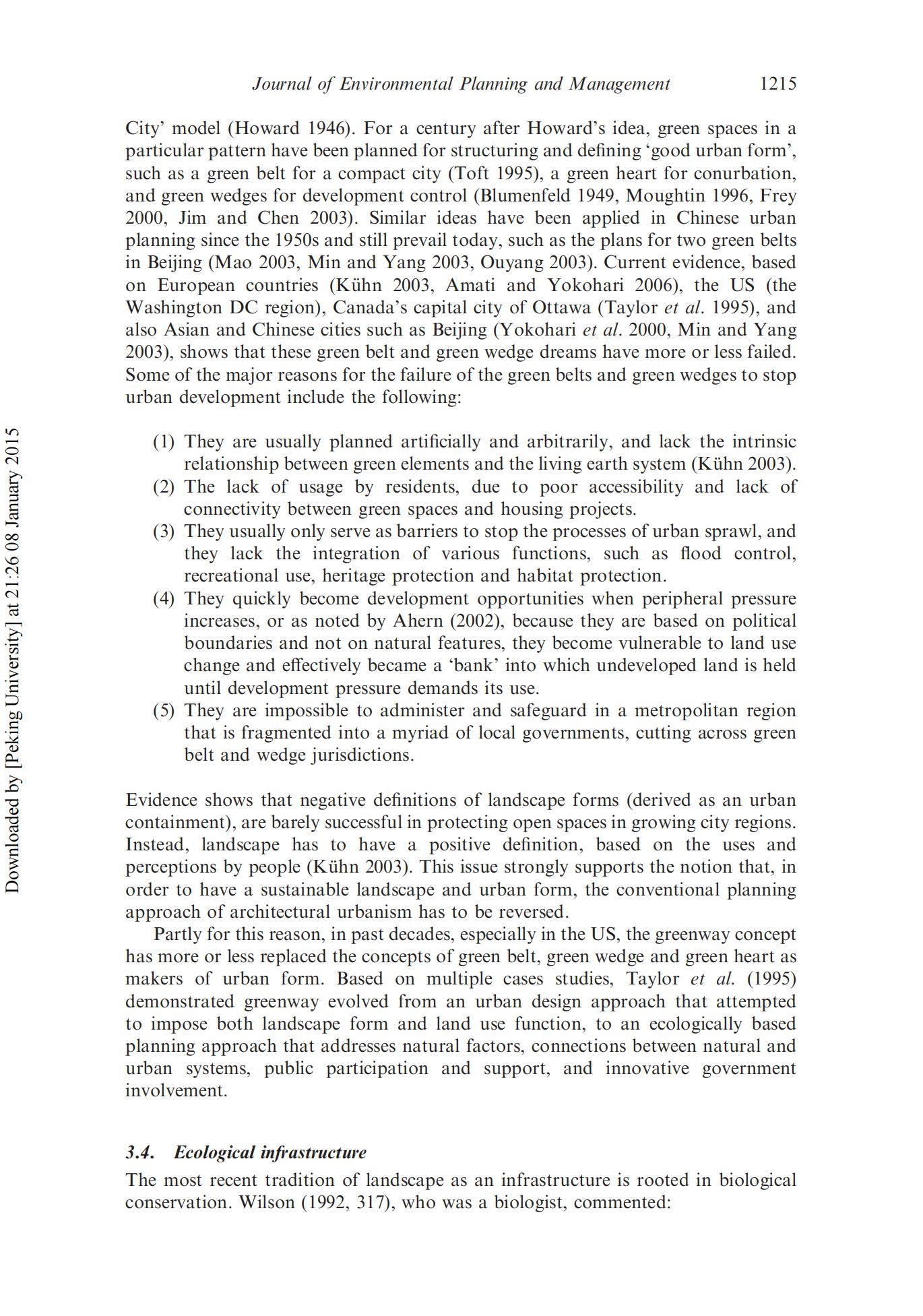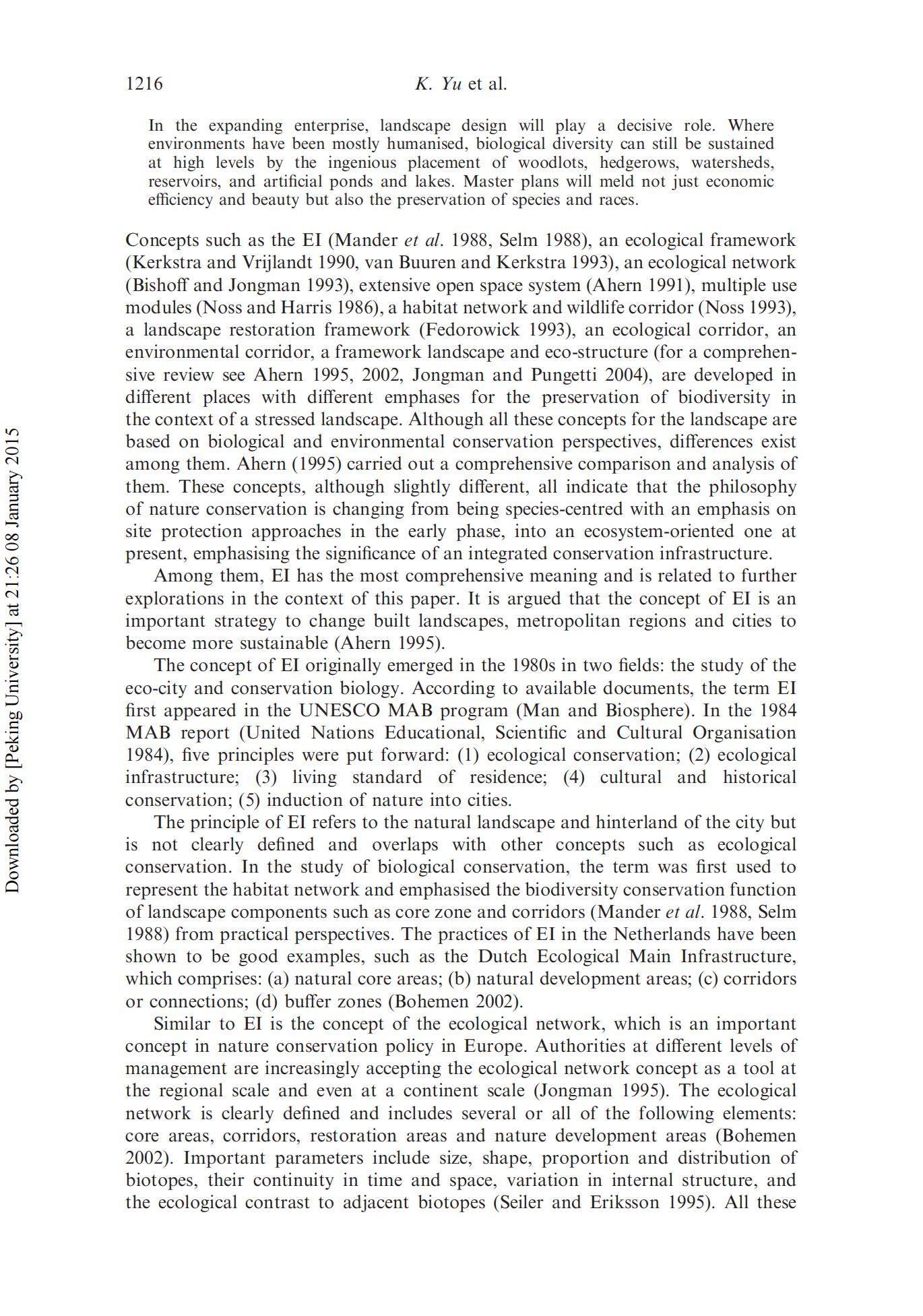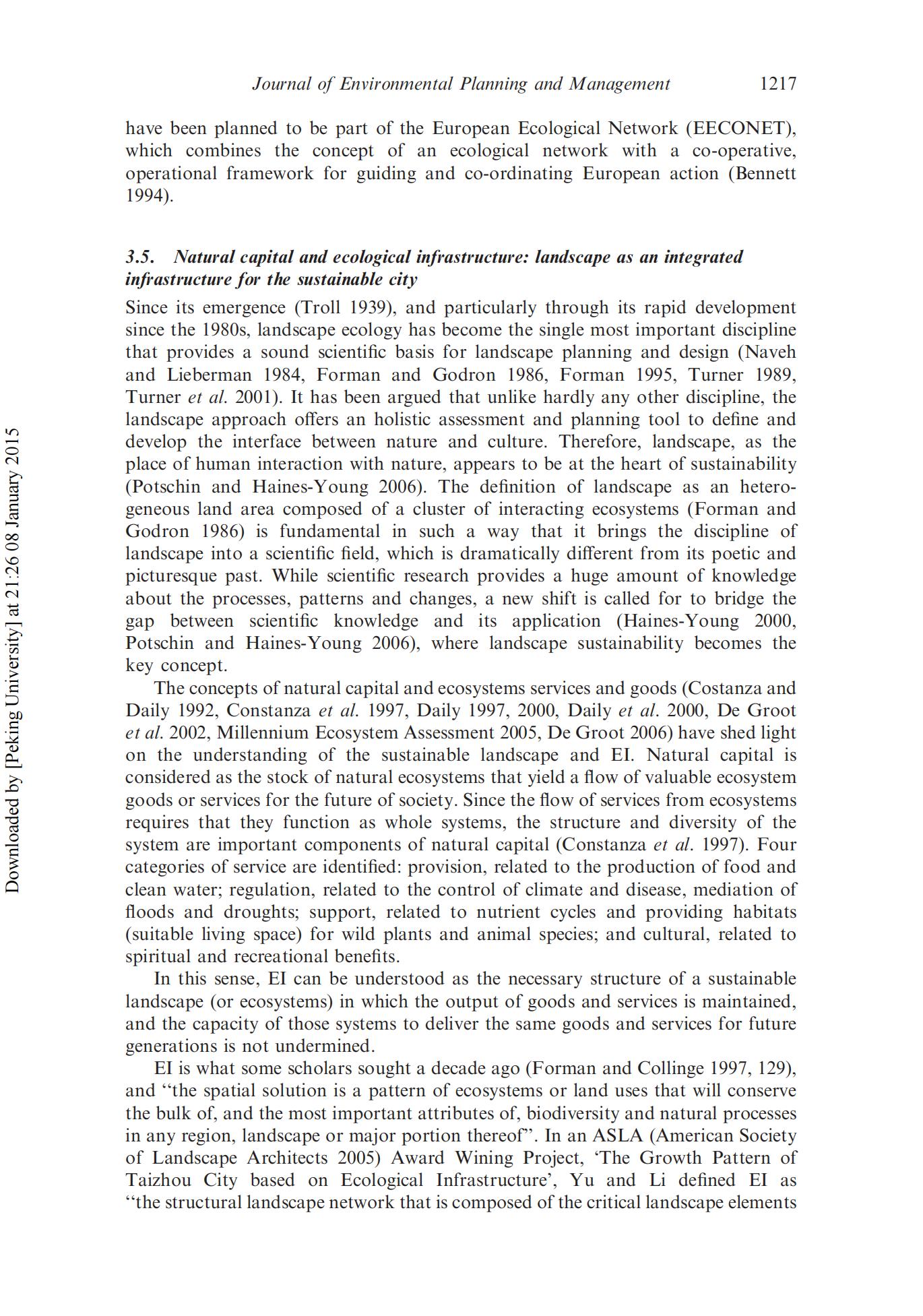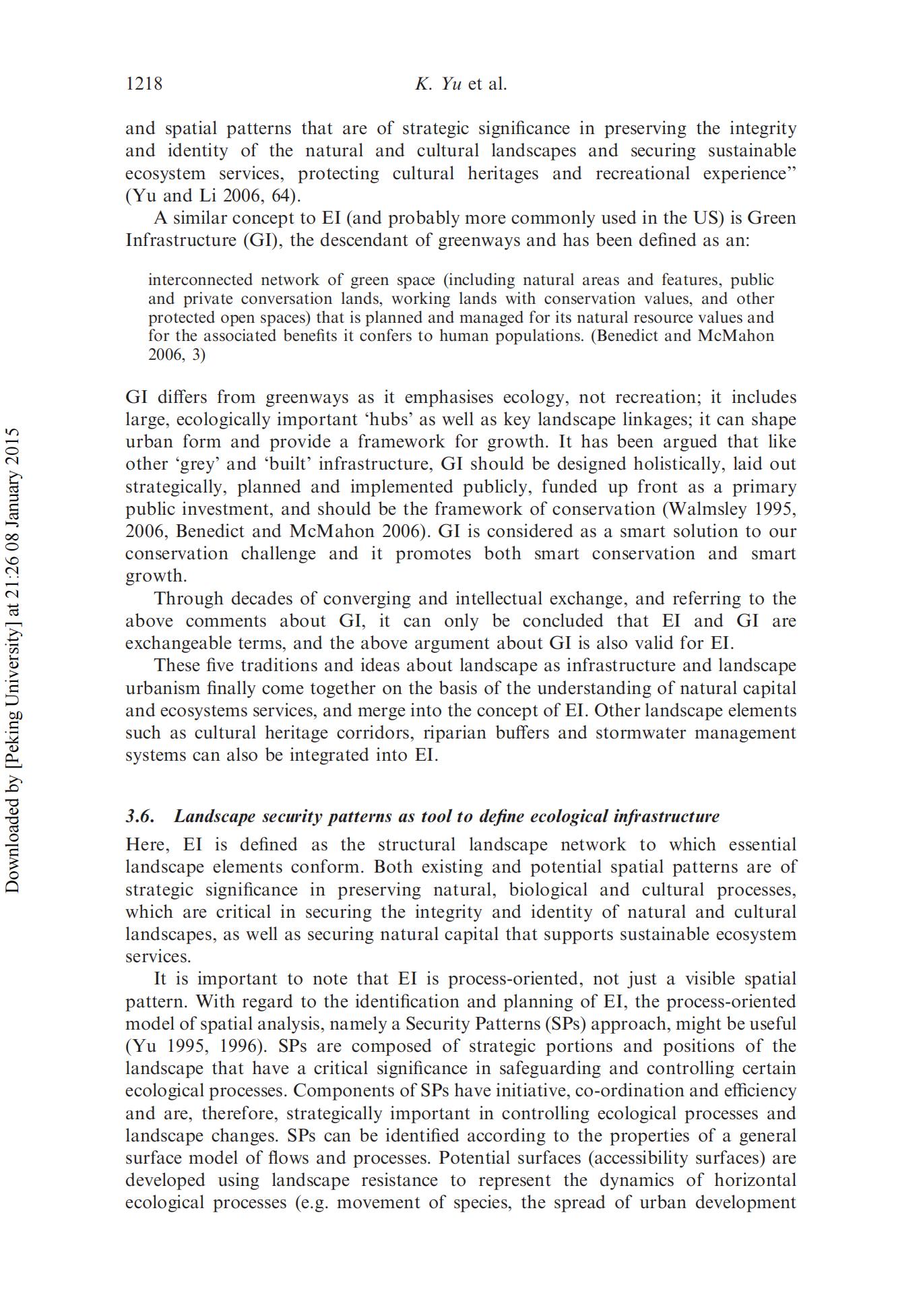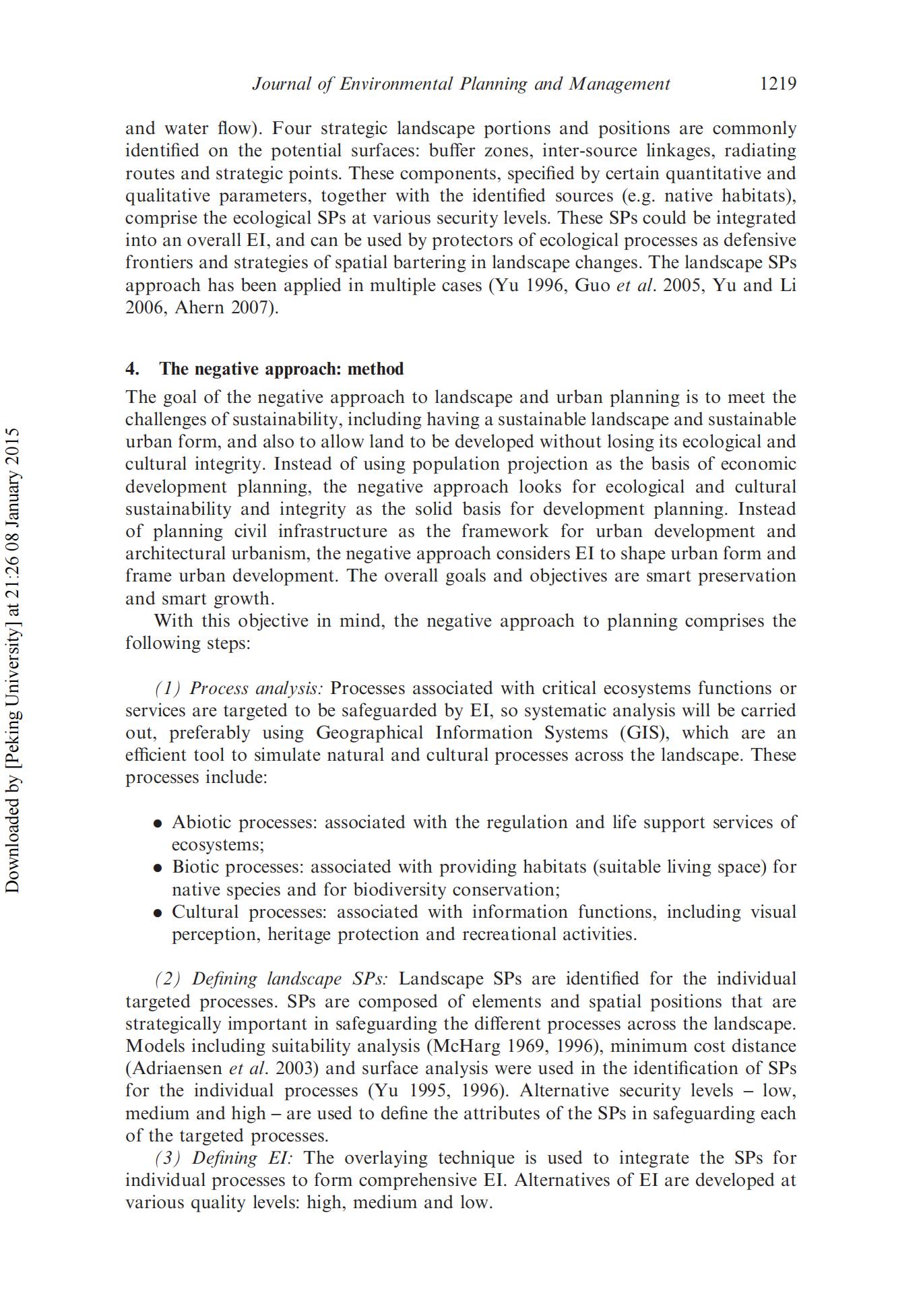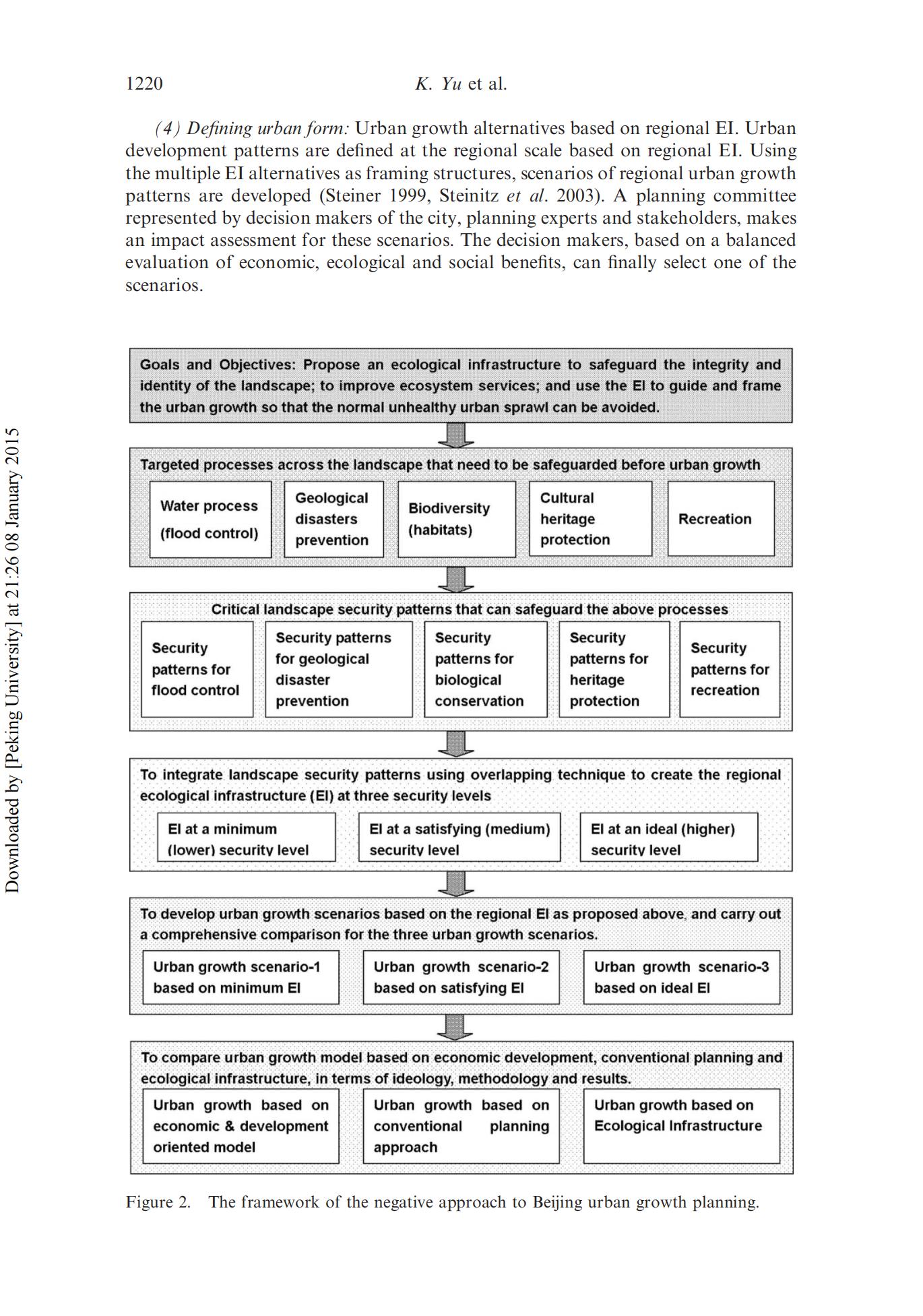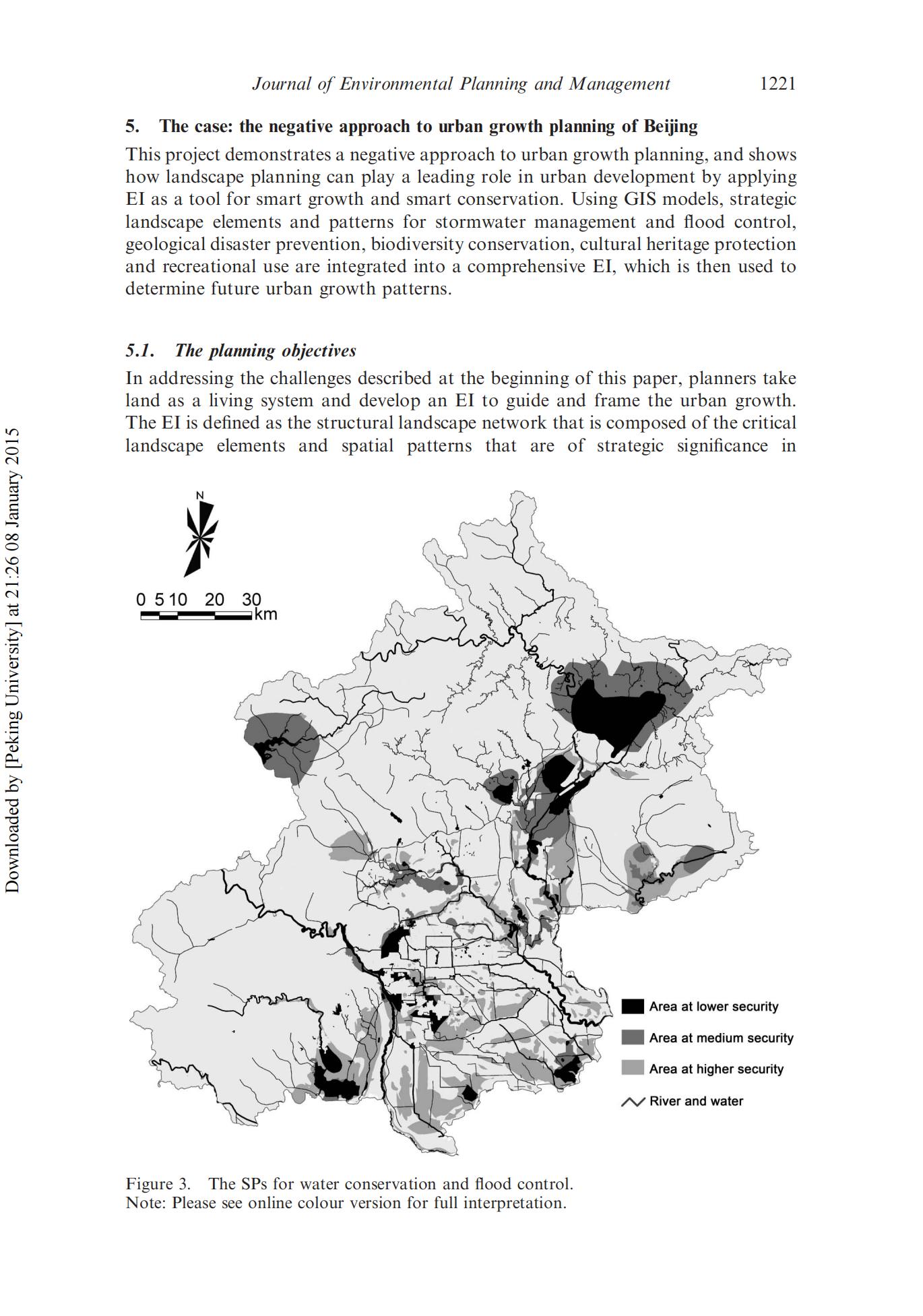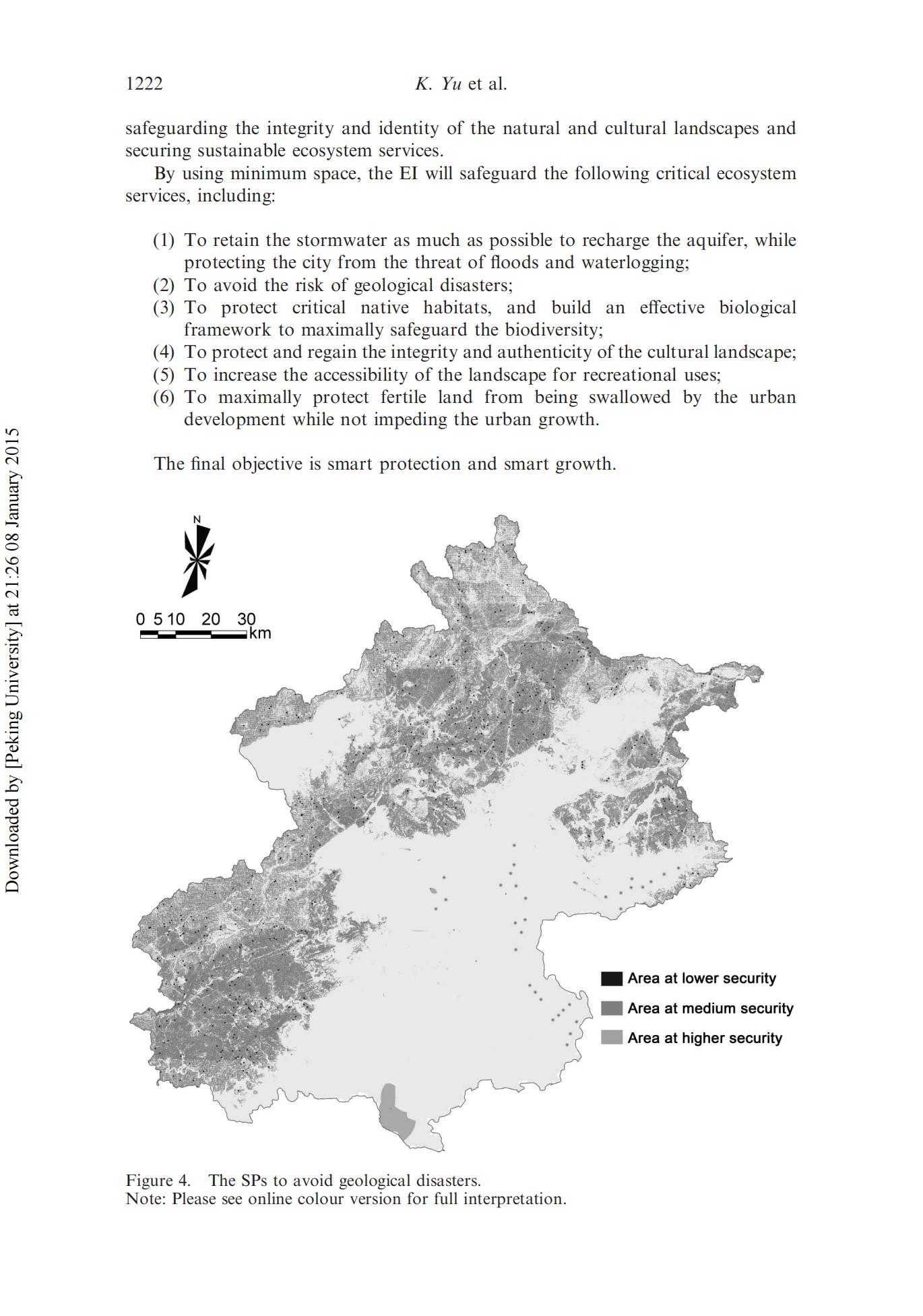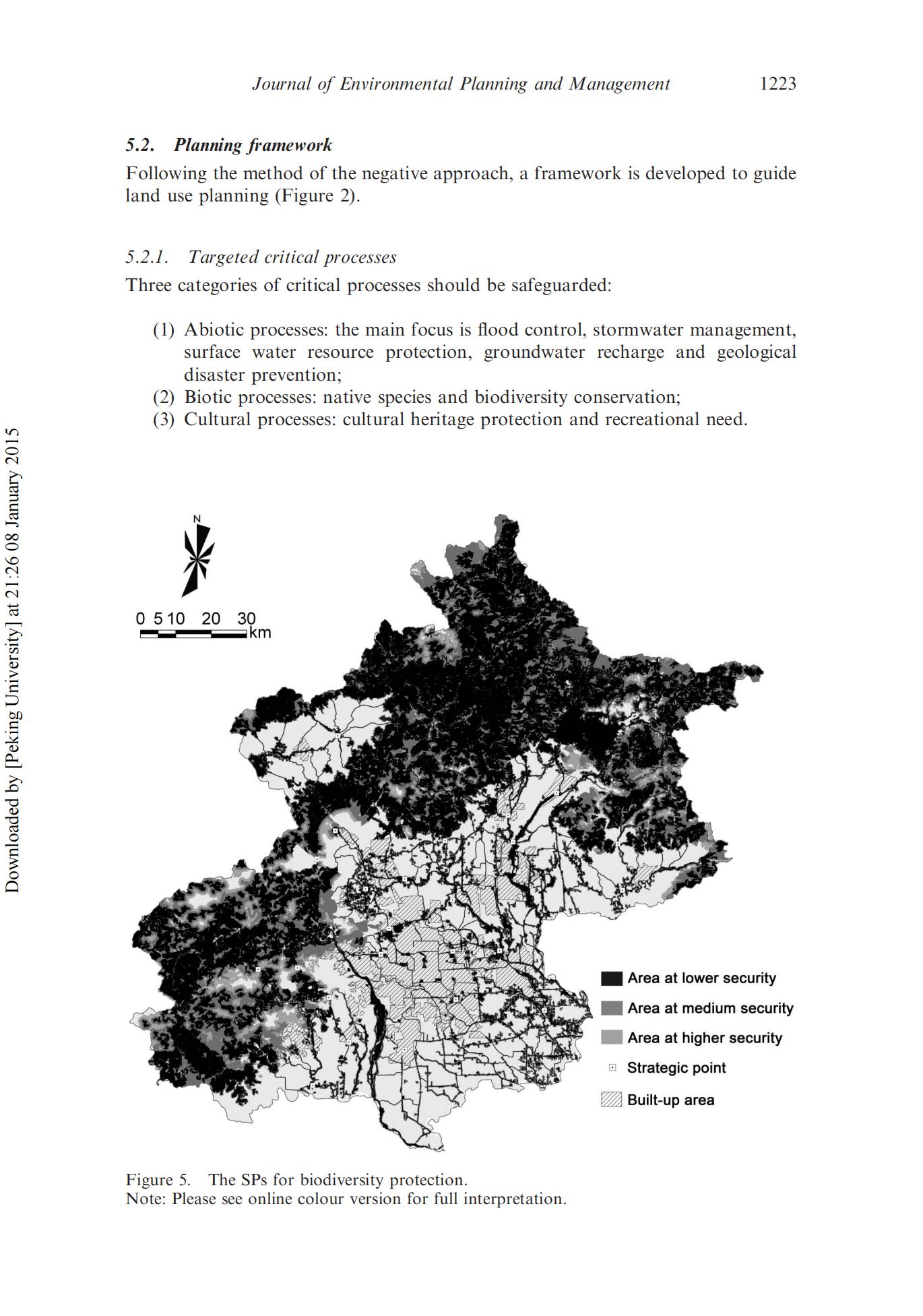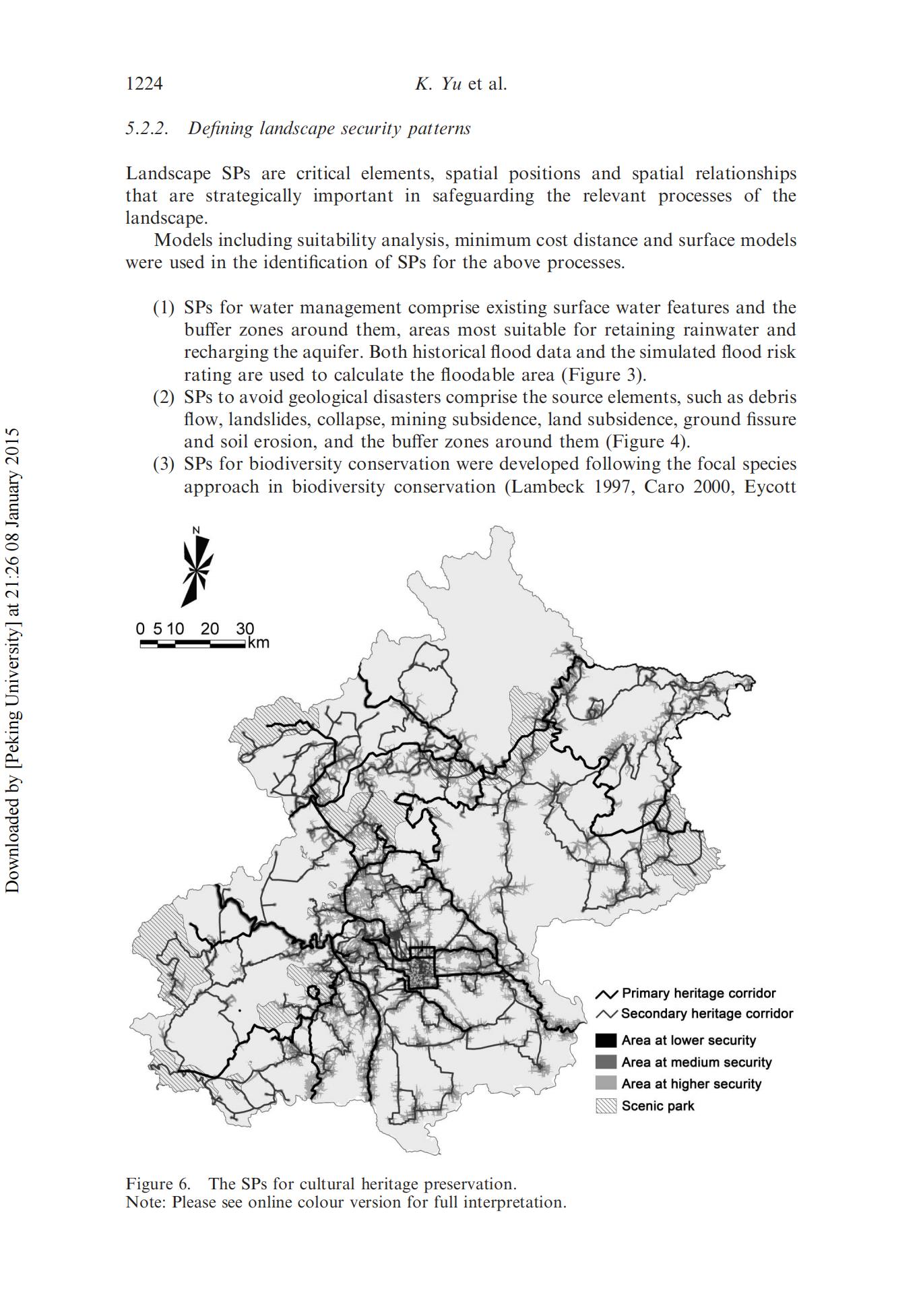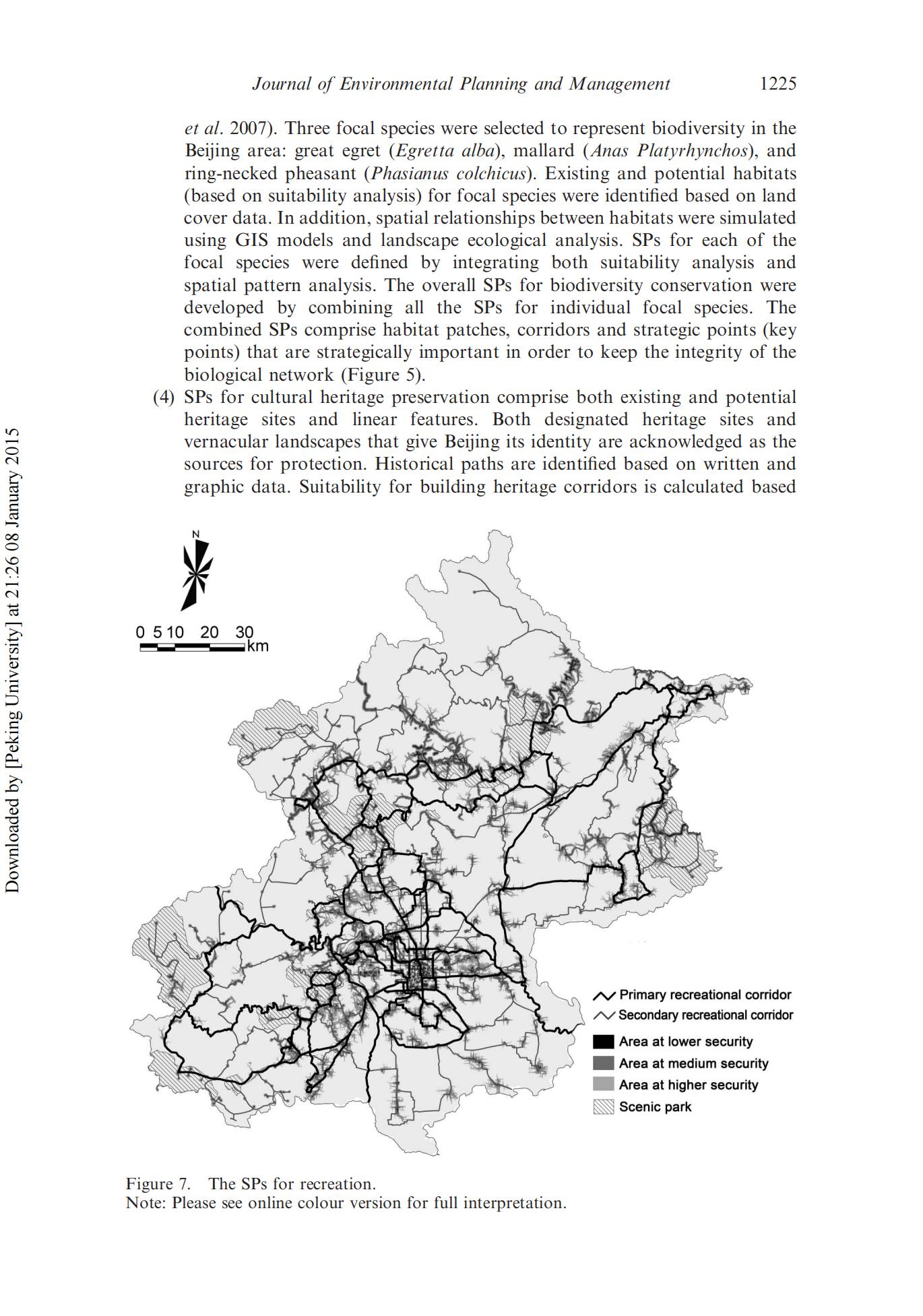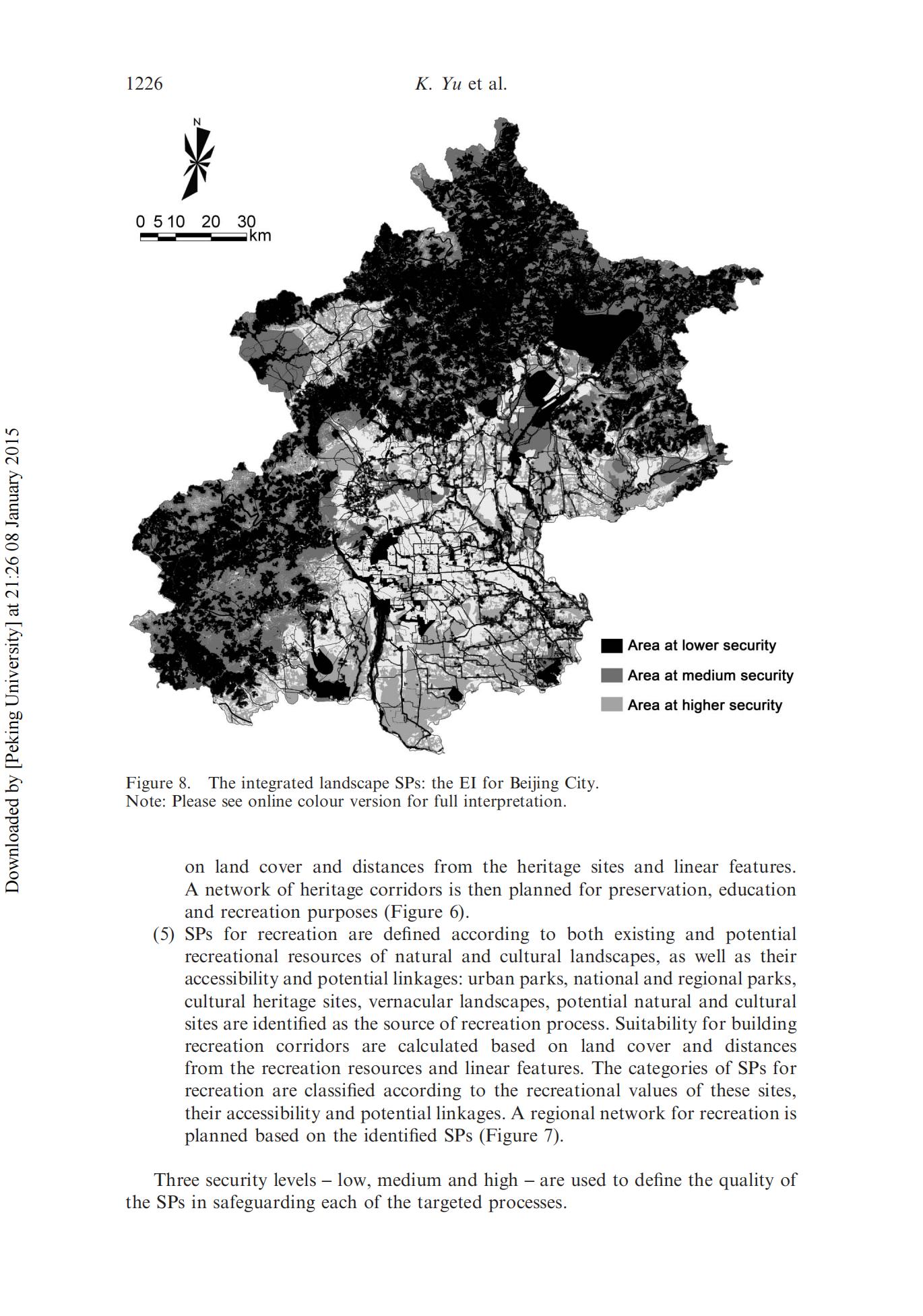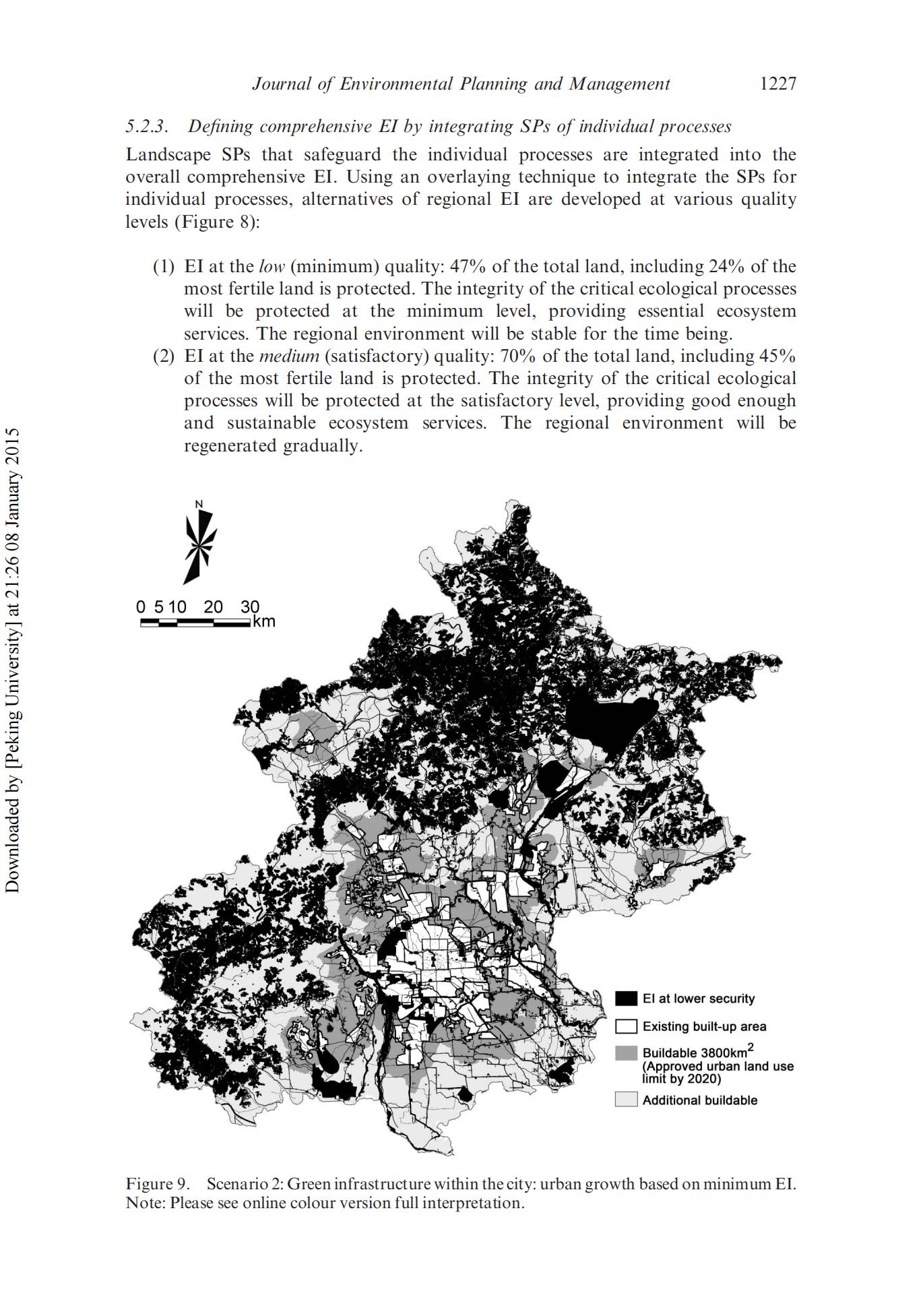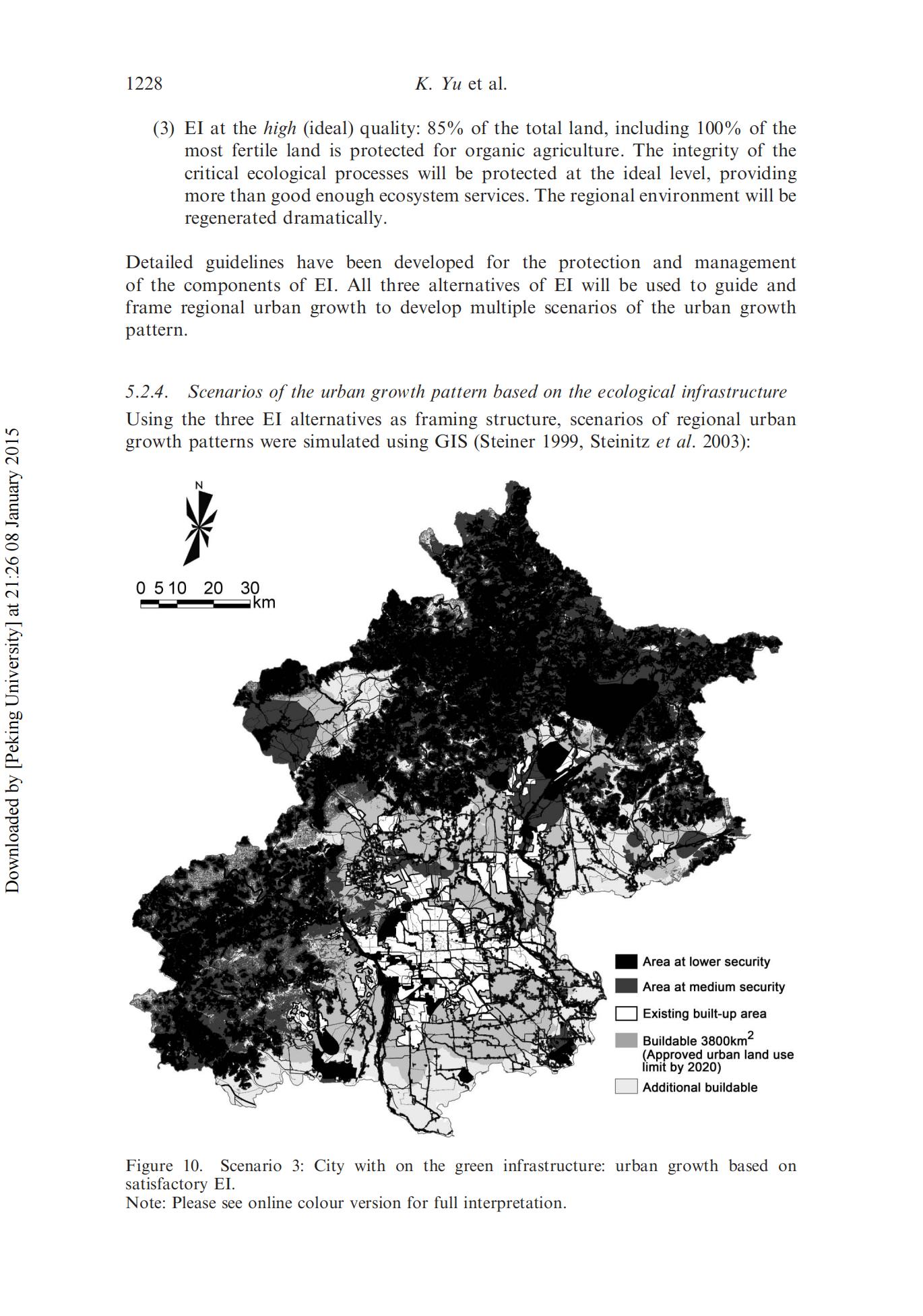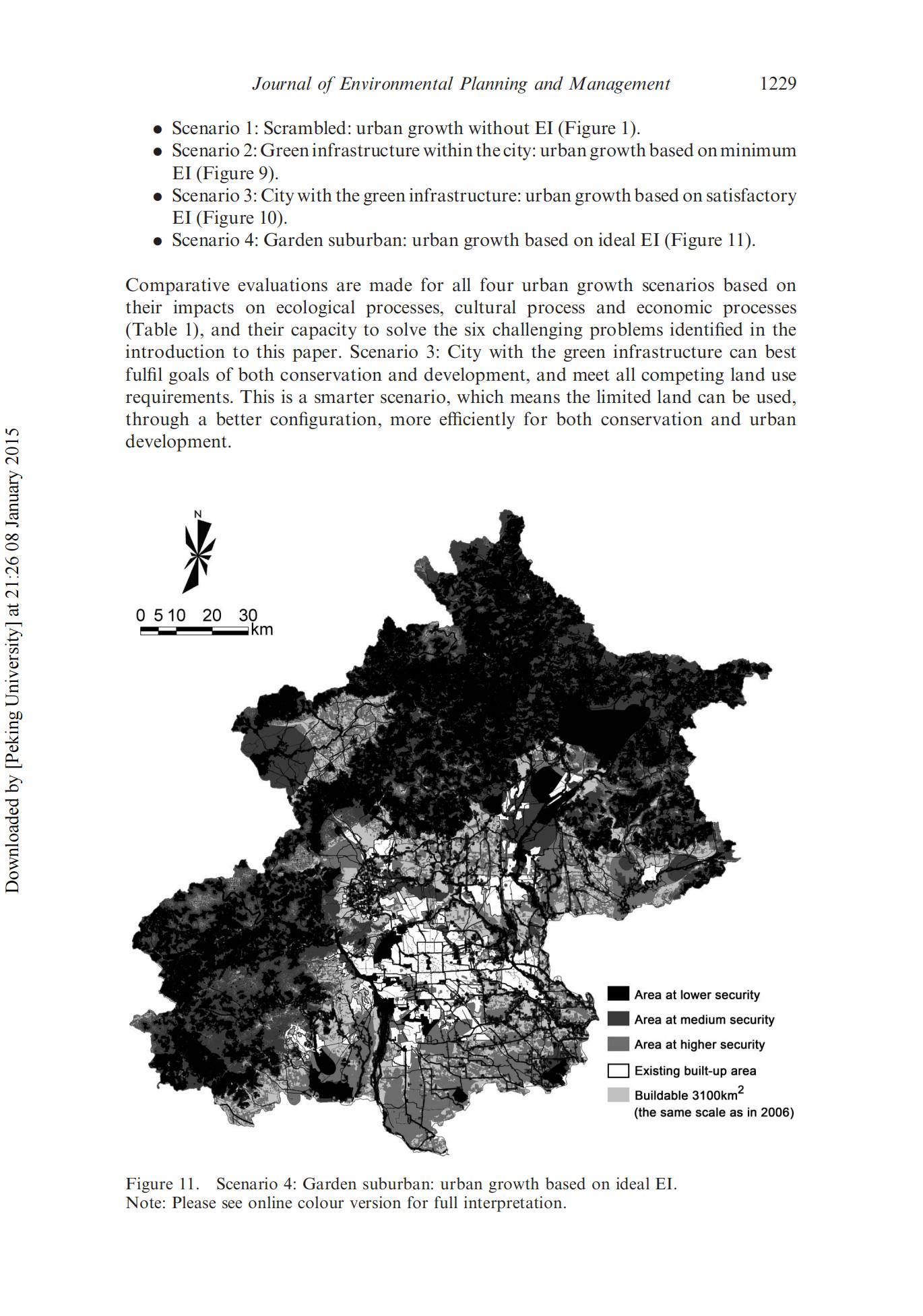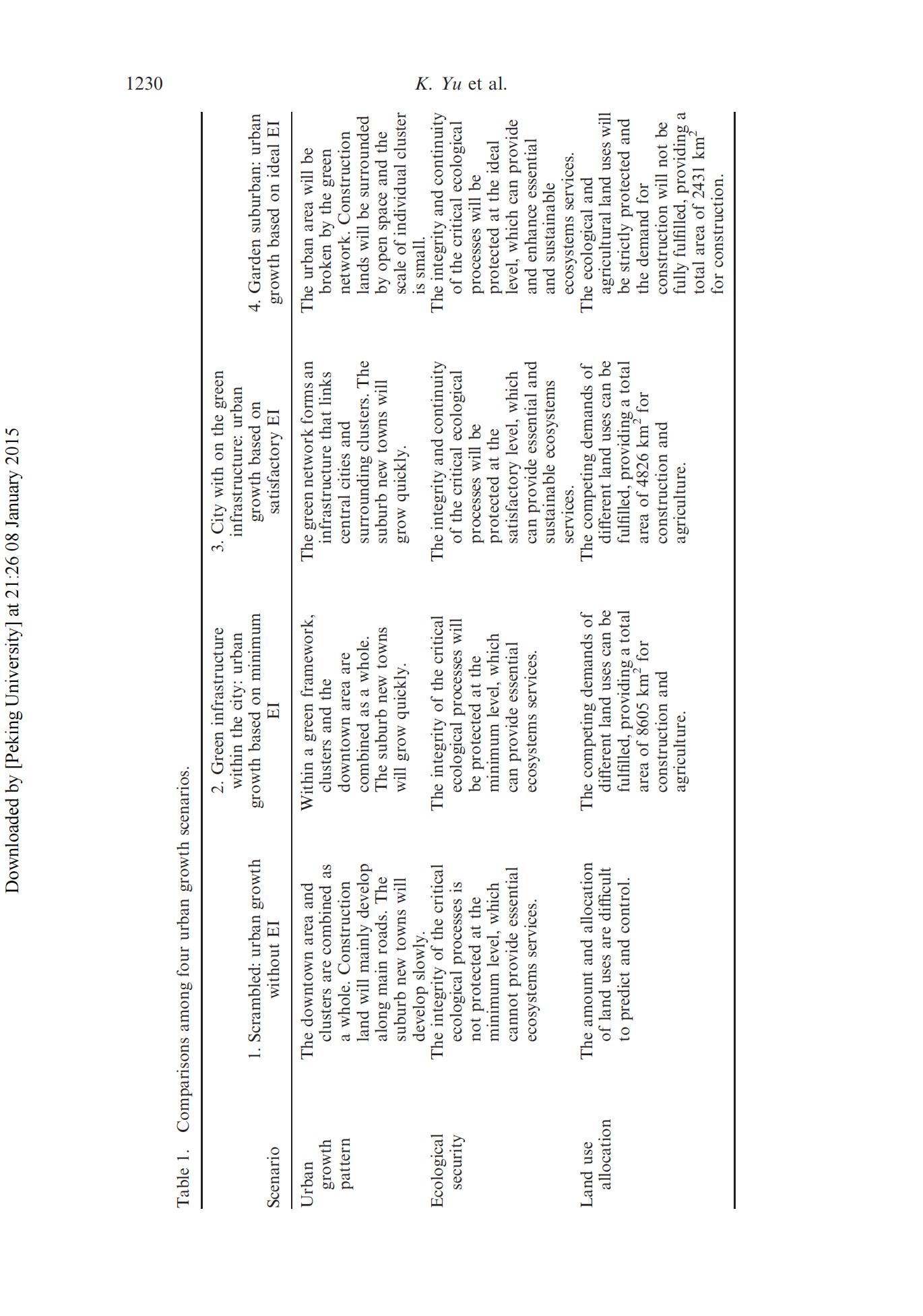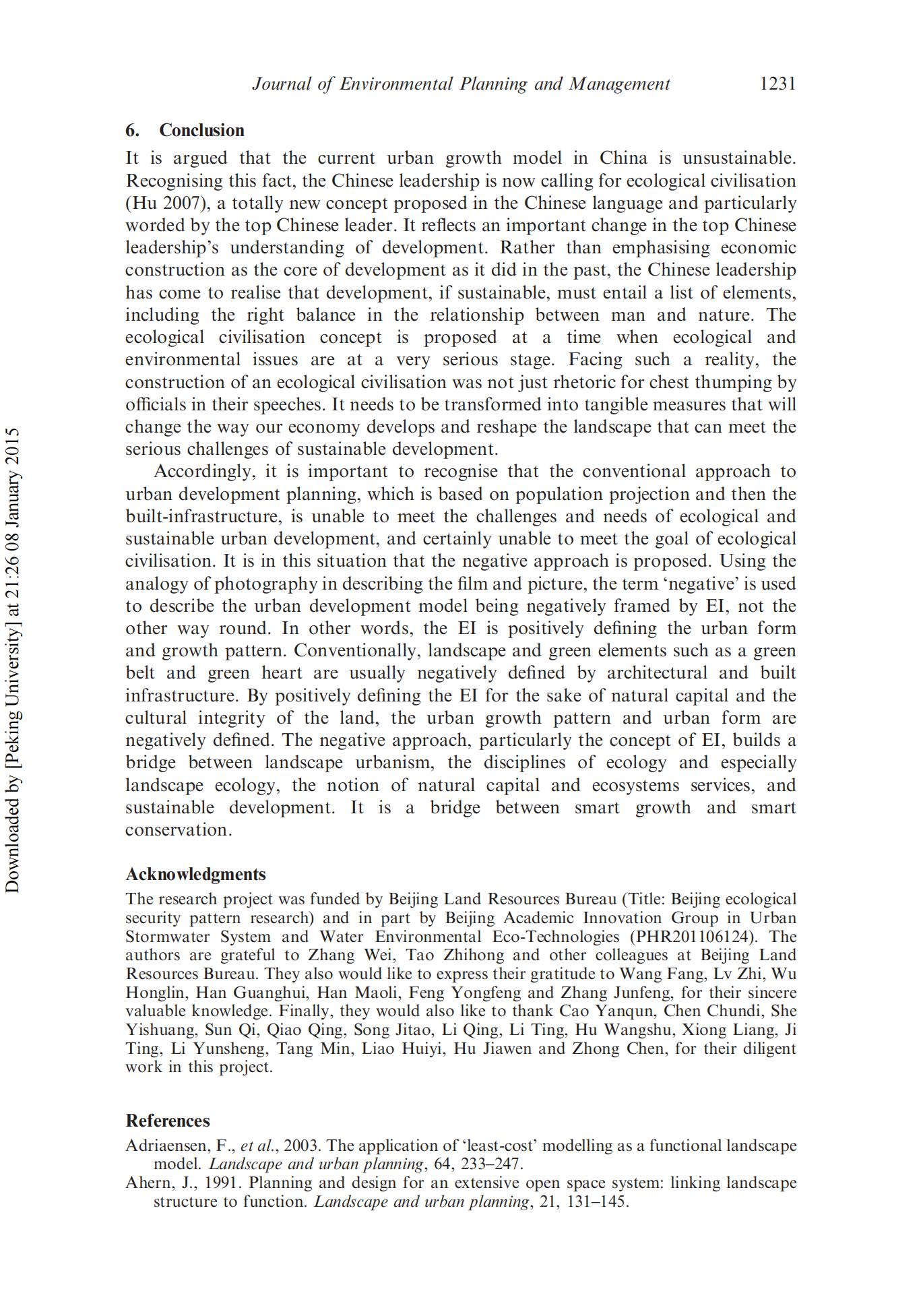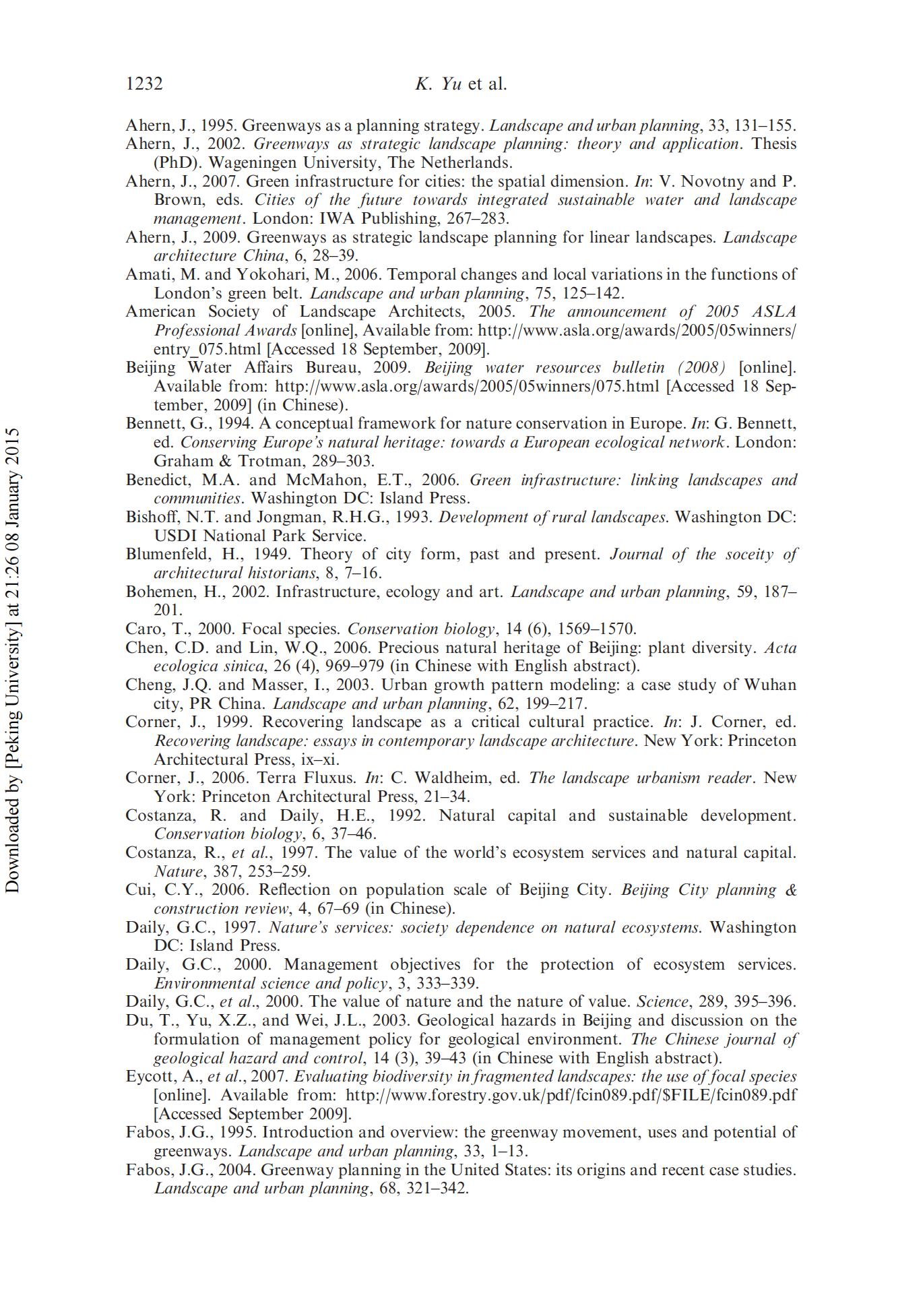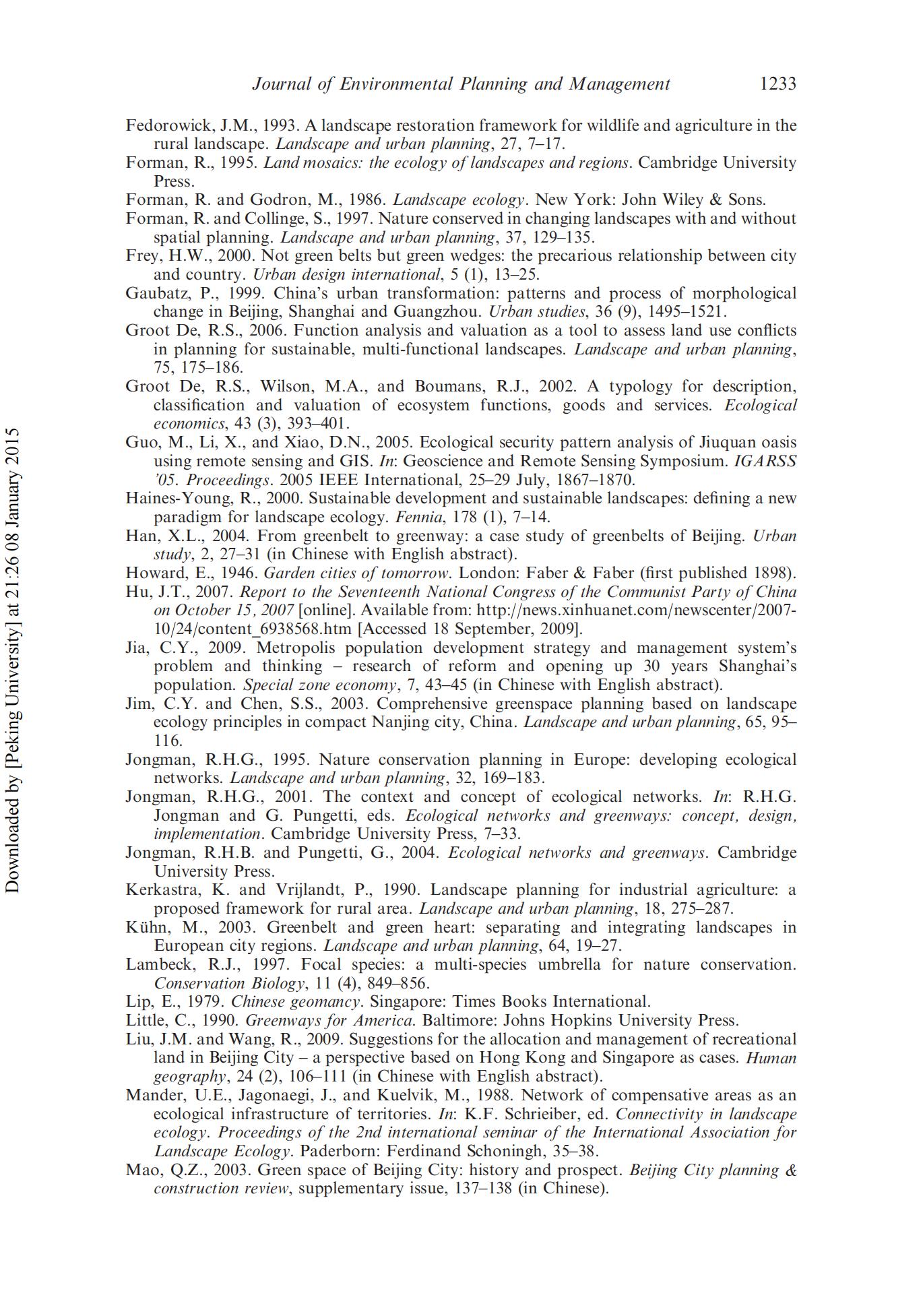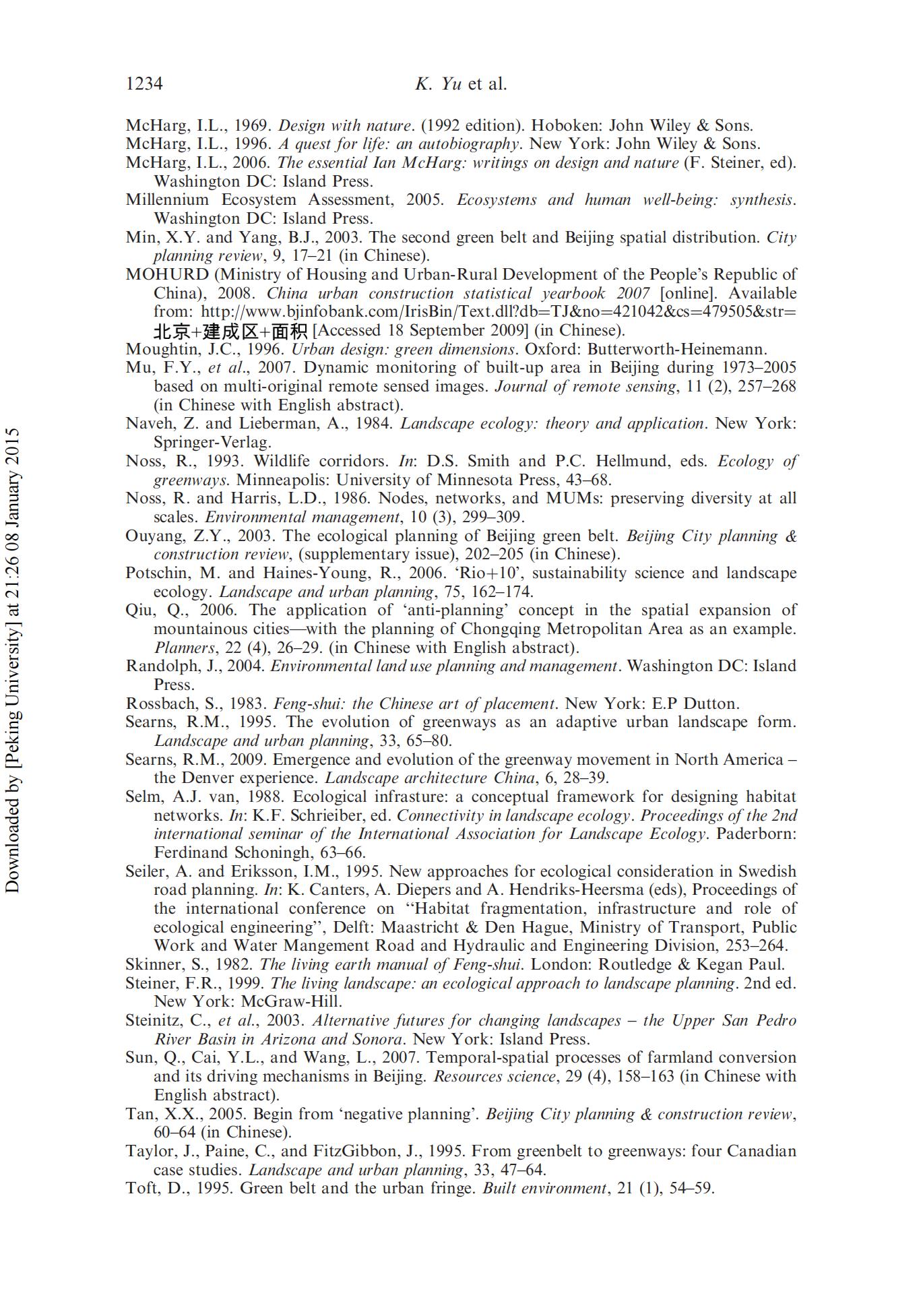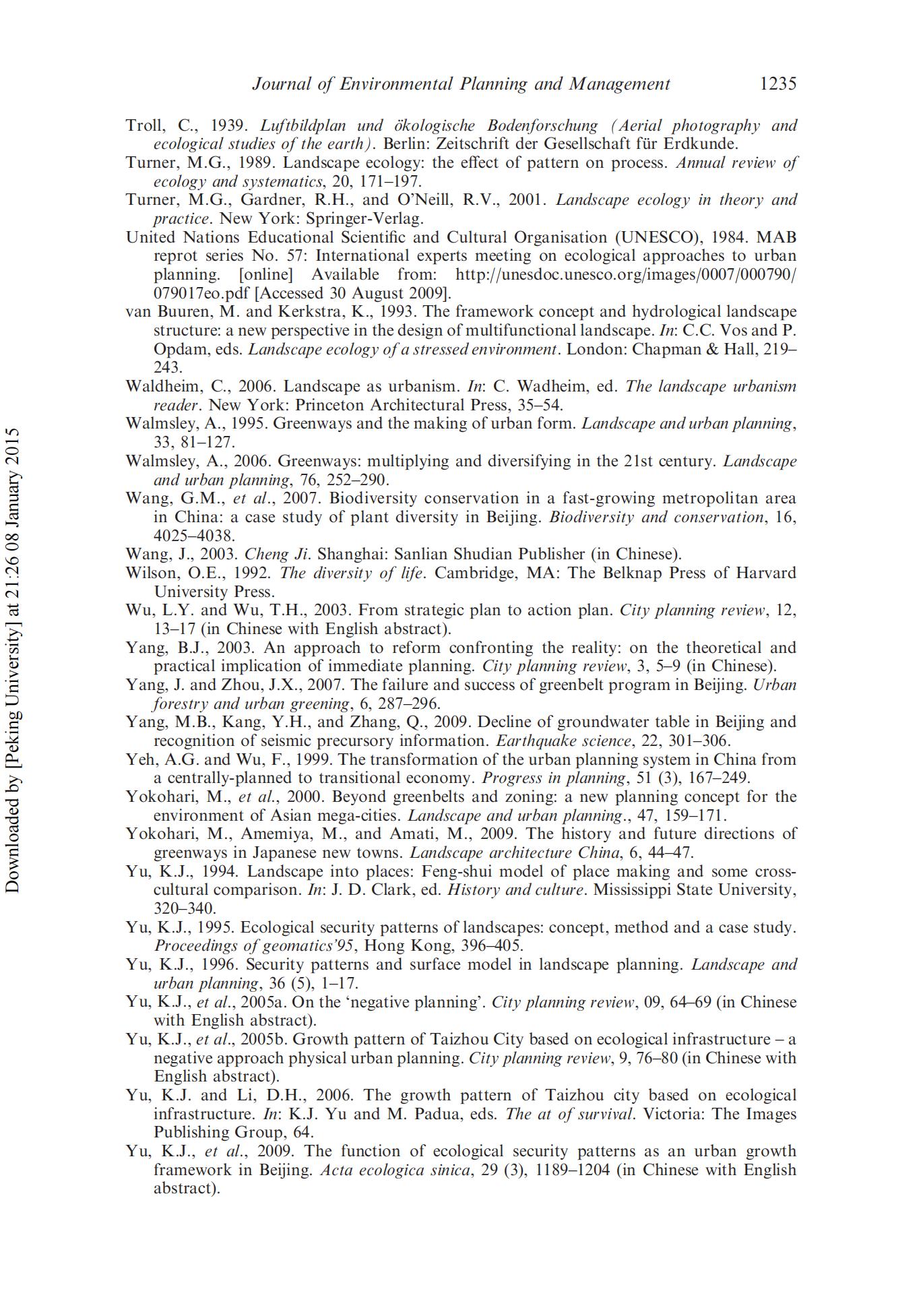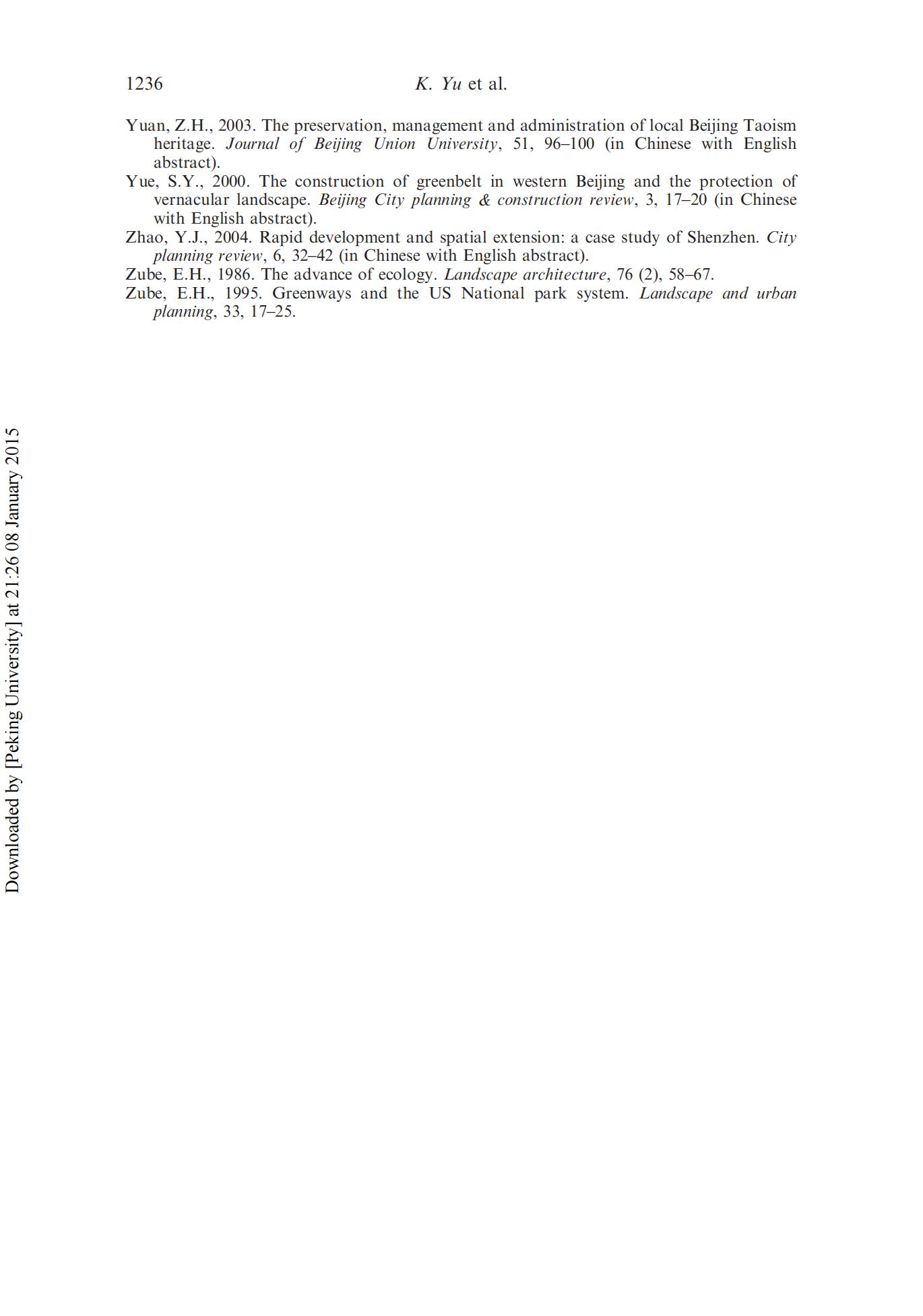The negative approach to urban growth planning of Beijing
2023-01-04
作者:Kongjian Yu, Sisi Wang & Dihua Li
来源:ecological planning; landscape planning; negative approach; ecological infrastructure; landscape urbanism
分享
- 摘要:
- Among other issues,the degrading environmental and ecological situations. the low performance scrambled city form and the loss of cultural identity in Beijing City have proved that the conventional 'population projection-urban infra-structure-land use'approach and thearchitectural urbanism approach to urban growth planning failed to meet the challenges of swift urbanisation and sustainability issues in China in general, and Beijing in particular. The 'negative approach' is proposed that defines an urban growth and urban form through the identification and planning of Ecological Infrastructure(ED.This approach has evolved from the pre-scientific model ofFeng-shui as the sacred landscape setting for human settlement, the nineteenthcentury notion of greenways as urban recreational infrastructure, the early twentieth century idea of green belts as urban form makers, and the late twentiethcentury notion of ecological networks and El as a biological preservationframework.EI is composed of critical landscape elements and structure that are strategically identified and planned to safeguard natural assets and ecosystems services,essential for sustaining human society.El is strategically planned and developed using less land but more efficiently preserving the ecosystems services. Using Beijing City as an example. this paper demonstrates how to use EIas a tool to guide and frame sustainable urban development.
文献来源:Kongjian Yu, Sisi Wang & Dihua Li: The negative approach to urban growth planning of Beijing, China[J].Journal of Environmental Planning and Management, 2011-54(9),1209-1236
